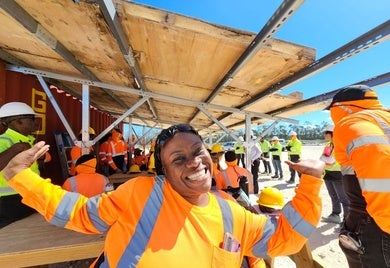Can an entire city switch to LED lights?

In Ensenada, Mexico, city officials have partnered with private company Optima Energía to do just that. They have replaced a total of 25,000 low-efficiency streetlights with new high-efficiency LED fixtures. The innovative project is set to reduce the municipality’s street lighting expenses by 60%. What’s more, the city does not pay anything upfront for these upgrades, as the cost will be covered through the energy savings generated by the LED lights.
Looking across Latin America, there are an estimated 25 million streetlights that could be replaced, offering a staggering $2 billion in potential annual savings. With such a robust opportunity, and given the increasing affordability of high-quality LED lighting, we anticipate this to be one of the region’s next growth sectors.
So why aren’t all municipalities following Ensenada’s lead just yet? The main challenge is that most of them do not have the budget to buy the LED fixtures outright and often have very limited or no access to financing.
City officials in Ensenada overcame this barrier through a partnership with Monterrey-based Optima Energía. The privately-owned energy service company acts as a facilitator, packaging engineering and financial solutions in a way that allows the city to pay for the upgrades through the savings generated by the new streetlights.
However, financing is still a major hurdle for many third-party providers in this space. To help early movers like Optima Energía on their pathway to scale, the Inter-American Investment Corporation (IIC) is offering tailored financing.
Through its Climate and Clean Energy Facility, the multilateral finances innovative proof-of-concept projects using established technology that is new to Latin America and the Caribbean. Paving the way for new investment, the IIC blends its own capital with donor resources from the Canadian Climate Fund for the Private Sector in the Americas, the Nordic Development Fund and the Climate Investment Funds. The IIC’s financing vehicle targets highly replicable and scalable projects in nascent markets expected to achieve significant growth in the short to medium term.
Public street lighting is one of those markets. There is a real need for municipalities to upgrade their street lighting and projects like the one in Ensenada are increasingly attractive to energy service companies like Optima Energía.
The 25 million lamps waiting to be replaced across the region will require an estimated $13 billion of investment. While more and more companies are interested in tapping into this market, the banking sector is still evolving its credit risk approach to fully engage with this new sector. Financing models like the one used by the IIC play a catalytic role in driving innovative solutions and, ultimately, generating new business for the region.
In addition to the significant economic incentives for local municipalities, replacing streetlights carries obvious benefits for the climate. The Ensenada project will avoid 150,000 tons in carbon emissions over a 20-year lifecycle. Given the Mexican government’s pledge to cut a quarter of its greenhouse emissions by 2030, this sector offers an important contribution to the country’s climate balance.
What’s more, better quality street lighting is linked to safer communities. In the case of Ensenada, it even contributed to gender empowerment, as Optima Energía created an internship program for female engineering students to gain experience in a growth sector in which they are underrepresented.
Like Ensenada, many other municipalities are starting to realize the potential of LEDs. In Mexico alone, there are close to 2,000 street lighting systems that need upgrading – a total investment estimated at more than $4 billion. The IIC is currently working with Optima Energía to replicate the Ensenada project in other Mexican cities.
Meanwhile, the project model is met with interest far beyond Mexico’s borders. Countries like Brazil, Chile and Colombia are all growth markets with a real demand for more efficient street lighting. As municipalities across the region follow in the footsteps of Ensenada’s city officials, local communities and the environment stand to reap the benefits.
LIKE WHAT YOU JUST READ?
Subscribe to our mailing list to stay informed on the latest IDB Invest news, blog posts, upcoming events, and to learn more about specific areas of interest.
Subscribe



